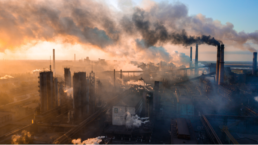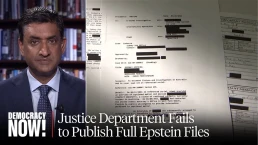Without new policies, the nation won’t even come close to halving emissions by the end of this decade.
By Zoya Teirstein, Grist
This story was originally published by Grist. You can subscribe to its weekly newsletter here.
Democratic members of Congress are considering a last-ditch attempt to reach a deal on something resembling a federal strategy to manage the emissions that cause climate change. Negotiations around that legislation are hitting snags left and right: Inflation and Russia’s war with Ukraine are top of mind as lawmakers weigh the pros and cons of approving another round of major government spending, potentially including roughly $300 billion worth of clean energy tax credits aimed at greening the nation’s power sector. The 2022 midterm elections are looming; Democrats likely have just a couple of months to deliver a climate plan before Republicans take back one or more chambers of Congress.

But climate change isn’t waiting around for politicians to figure out a clean energy strategy — the impacts of the climate crisis are becoming more visceral with each passing year, and global emissions are still rising. A new analysis from the independent analytics company Rhodium Group shows the U.S. is on track to fall “significantly short” of its climate goals.
Rhodium assessed the suite of climate-related policies in effect in the U.S. right now, including the bipartisan infrastructure bill Congress passed last year, the Environmental Protection Agency’s new standards for light-duty vehicles, and various state-level renewable energy targets. It paired those assessments with an analysis of trends in clean energy technologies, the cost of renewables, shifts in energy markets, and the overall economic outlook for the U.S. The group found that, without any additional action on climate change, the nation is on course to reduce emissions by 24 to 35 percent below 2005 levels by the end of this decade.
That may sound like a step in the right direction, and the report’s authors note that this year’s outlook is an improvement over the analysis Rhodium conducted last year, which estimated a 17 to 30 percent reduction in emissions by 2030. But the progress this year is basically a fluke — it was caused by slowing economic growth and rising fossil fuel prices driven by inflation, not by any kind of concerted policy effort to reduce emissions. And the nation is projected to drastically undershoot its goal of reducing emissions 50 and 52 percent below 2005 levels by 2030, part of its commitment to other countries as a member of the 2015 Paris Agreement.
“Even by 2035, GHG emissions remain stubbornly high,” the report said — between 26 and 41 percent below 2005 levels. “The clock is ticking on both achieving the U.S.’s 2030 climate goals and on reducing emissions to avert the worst impacts of climate change.”
There are a few silver linings in Rhodium’s 2022 outlook. Under current policies, emissions from the power sector will continue to slow. The transportation sector, currently the top-emitting sector in the U.S., is expected to lose its position in first place to the industrial sector as fuel efficiency improves and Americans buy more electric vehicles. And by 2035, households will be spending less on gasoline thanks to an upswing in electric vehicle sales, leading to a 16 to 25 percent decrease in household energy costs compared to 2021.
If there’s one takeaway from this year’s report, however, it’s that these estimates can change at the drop of a hat. Geopolitical and economic uncertainty are largely responsible for the shift in emissions projections this year. How countries like the U.S. respond to these events could set the stage for deeper emissions cuts or higher emissions in the coming years. For example, Democrats in Congress might manage to pass climate legislation before the midterms, boosting the renewable energy industry and setting the U.S. on a greener path. If that happens, research shows that the nation has a good shot of reducing emissions 50 percent below 2005 levels by around 2035. But the opposite could occur: America could ramp up its production of natural gas to meet European demand, domestic inflation could prompt some Democratic lawmakers to abandon efforts to funnel new spending into the economy, and issues with the supply chain, among other obstacles, could stymie renewable energy deployment.
“Uncertainty is our watchword” this year, a spokesperson for the Rhodium Group said in a press release. “Global and U.S. energy markets and economic expectations look very different now than they did a year ago.”
Recent Posts
The “President Of Peace” Prepares For War
December 23, 2025
Take Action Now The Donroe Doctrine Hits HomeBy William D. Hartung, Tom Dispatch Earlier this month, the Trump administration released its new…
“Who Are They Protecting?”: Rep. Ro Khanna Urges Contempt Charges Over AG Bondi’s Epstein Redactions
December 22, 2025
Take Action Now “The House can act unilaterally on contempt, and this will be introduced by Thomas Massie. What the resolution will say is that…
Dems Demand Answers as Trump Photo Disappears From DOJ Online Epstein Files
December 21, 2025
Take Action Now “What else is being covered up?”By Brett Wilkins, Common Dreams Congressional Democrats on Saturday pressed US Attorney General…
Elon Musk Is Vowing Utopia Driven by AI and Robotics. Bernie Sanders Has a Few Questions
December 20, 2025
Take Action Now “I look forward to hearing about how you and your other oligarch friends are going to provide working people with a magnificent life…




